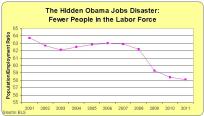Like many libertarians, I’ve always assumed that Thomas Jefferson was one of the best Founding Fathers.
 He certainly was an advocate of liberty and I’ve cited him several times (see here, here, here, here, here, and here) over the years.
He certainly was an advocate of liberty and I’ve cited him several times (see here, here, here, here, here, and here) over the years.
But maybe being quotable is not enough.
There’s a fascinating article in the latest issue of Cayman Financial Review that looks at the emergence of economic liberty in the Anglo-Saxon world and it makes a persuasive argument that Alexander Hamilton was a more effective advocate of free markets.
Written by a Washington-area economist who uses a nom de plume because of his position in government, the article starts by explaining that England’s Whig Revolution in the early 1700s helped create the conditions for astounding British prosperity. Notwithstanding resistance from the landed elites.
In England, the Whig Revolution was a series of events – the successful invasion of William of Orange to dethrone James II in 1688, the selection of George I to succeed Queen Anne in 1714, and the selection of Robert Walpole as the first Prime Minister in 1721 – that created the Westminster parliamentary system…
Most important, the Whig Revolution also created the institutional and legal framework that transformed England into a modern capitalist economy and sparked the Industrial Revolution. The adoption of Dutch commercial law, the creation of the Bank of England, and the circulation of its bank notes monetized the English economy. English courts abandoned the medieval “just price” doctrine, which let judges nullify contracts after the fact based on the concept that all goods and services had an objective value and any deviation from this just price should therefore be unlawful. …Traditional guilds collapsed. Entrepreneurs were free to create new firms, determine output and prices, borrow from banks, and issue stock. New manufacturing firms lured workers away from the estates of the landed gentry to rapidly growing English cities with wages paid in paper currency. …Rapid economic, political, and social change inevitably produced a reaction led by the arch-Tory Henry St. John, the First Viscount Bolingbroke. …To Bolingbroke, the Whig Revolution corrupted England… Bolingbroke rejected the legal and political reforms that created a modern capitalist economy. …But he failed to turn back the clock.
The same battle occurred on the other side of the ocean. albeit several decades later.
And most of America’s Founders apparently were not on the right side.
The Whig Revolution, which had allowed England to develop a modern capitalist economy, did not immediately cross the Atlantic. …In the 1770s, colonial legislatures still regulated the prices for many goods and services and forbade arbitrage and speculation. Colonial courts still accepted “just price” doctrine, allowing judges, all whom were members of a small oligarchy, to overturn contracts when market prices moved against colonial elites. And when crops failed or prices fell, colonial legislatures frequently declared “debt holidays” to prevent creditors from seizing the property of the colonial oligarchs. …Most of the America’s founders were from the small, wealthy elite in the colonies. Identifying with the English gentry rather than the rising middle class, Bolingbroke greatly influenced most of the founders’ views of economics and politics. Most founders, especially Thomas Jefferson and James Madison, agreed with Bolingbroke about the primacy of agriculture, shared his fears of banks and a paper currency, and dreaded industrialization. Most founders accepted Bolingbroke’s policy recommendations.
But Alexander Hamilton had a more enlightened outlook.
Alexander Hamilton was different than other founders. …Hamilton immigrated to America in 1773. Serving as General George Washington’s aide-de-camp, Hamilton observed how a weak Continental Congress imperiled the war effort. …Hamilton had a very different prospective from other founders with the notable exceptions of Washington and John Marshall. Hamilton wanted America to become a dynamic meritocracy. …Hamilton wanted poor, but talented individuals like himself to have avenues other than land ownership to earn wealth. Moreover, Hamilton rejected slavery because it prevented slaves from their full economic potential and made masters indolent and lazy. Moreover, Hamilton rejected racism. “The contempt we have been taught to entertain for the blacks, makes us fancy many things that are founded neither in reason nor experience.” During the Revolution, Hamilton proposed emancipating slaves that agreed to fight in Continental Army. Later Hamilton founded the New York Society for the Manumission of Slaves. Instead of Bolingbroke, Hamilton embraced the Whig Revolution and wanted to bring its economic benefits to the United States. …Moreover, Hamilton was staunch defender of property rights even when it was politically costly to him. As a lawyer in New York City, he successfully argued for the restoration of property of Englishmen and Loyalists that had been seized after the Revolutionary War in violation of the Treaty of Paris and the law of nations.
What about Hamilton’s protectionism?
He’s semi-guilty, but the author explains that Hamilton was mostly looking for a way of funding a modest-sized government.
that Hamilton was mostly looking for a way of funding a modest-sized government.
And as I wrote last month, a modest tariff to fund a very small central government (as all the Founders preferred) would be a great improvement over what we have now.
Moreover, Hamilton even understood the basic principle of the Laffer Curve a couple of hundred years before Art Laffer’s famous napkin sketch.
While some future policymakers misused Hamilton to justify their protectionism, Hamilton was not a protectionist in the modern sense. …In a world in which income and value-added taxes had not been invented, …Hamilton favored a revenue tariff that averaged about 10 percent over a property tax to fund the federal government. Hamilton sought to maximize the federal government’s revenue and provide a modest margin of protection to domestic manufacturers rather than to block imports. Indeed, Hamilton argued: “It is a signal advantage of tax on articles of consumption, that they contain in their own nature a security against excess. They prescribe their own limit; which cannot be exceeded without defeating the end proposed – that is an extension of the revenue.”
I’m not fully convinced that Alexander Hamilton is a libertarian hero (that would entail support for free banking rather than his version of central banking), but I’m looking at him much more favorably after reading this article.
And I’m now significantly less sympathetic to Thomas Jefferson.
I’ll close on a wonky note. In my column about the would-be nation of Liberland, I cited some research on the relationship between “state capacity” and economic prosperity. The notion is that an economy won’t prosper unless a government is both strong enough and effective enough to deter aggression and to provide rule of law (while otherwise leaving the private sector unmolested).
I’m certainly no expert on the Founding Fathers, but it seems that Hamilton had that point of view.















































 the editor of Current Affairs, wrote…that socialism has not “failed”. It has just never been done properly… Closer to home, Owen Jones wrote that Cuba’s current version of socialism was not “real” socialism… And Washington Post columnist Elizabeth Bruenig wrote an article with the self-explanatory title ‘It’s time to give socialism a try’.
the editor of Current Affairs, wrote…that socialism has not “failed”. It has just never been done properly… Closer to home, Owen Jones wrote that Cuba’s current version of socialism was not “real” socialism… And Washington Post columnist Elizabeth Bruenig wrote an article with the self-explanatory title ‘It’s time to give socialism a try’.










































